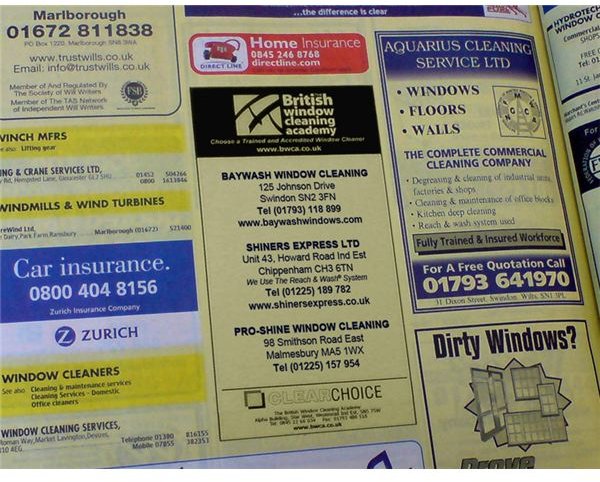What is the Best Advertising Strategy for Your Small Business?
The Best Advertising Strategy for Small Business
In today’s futuristic and fast-paced world, saving money by not advertising is like stopping a clock to save time. It is very important for all businesses, large and small, to consider an advertising strategy for the small business to make prospective customers know about the range of products and services offered.
After 36 years in the retail sector and after 25 years of coaching and consulting, John Wanamaker who is a 19th century department store magnate said, “Half the money I spend on advertising is wasted; the trouble is I don’t know which half.”
Unfortunately, large budgets kept aside for advertising does not mean memorable advertising. As a matter of fact, there are even some very effective means of free advertising for your small business. After all, advertising is an art and not a science! Small businesses may have to test the usefulness and the significance of each medium and then decide the best strategy to advertise their product or service. It is important to know if the advertising expense is wisely spent.
Unlike big advertisers like Coke, Apple and Ford, small businesses on shoestring budgets need to make sure each dollar they spend is effective. This means that accountants would have to calculate the return on investment on every advertising strategy they initiate. The point is to find a medium that fits the company and the industry and gives high returns.
The outcome should not be calculated by the amount of money spent but the number of new customers that the business has gained. Advertising is like an investment for the future of the business. Before choosing an advertising strategy, it is important to consider the right medium for the advertising strategy. This article aims to help you determine which type of advertising medium is best and most cost effective for your small business.
Print as an Advertisement Medium
Despite the relentless use of newspapers and magazines, print advertising is still a good way to cater to the needs of a targeted market. For example, if you are a travel agent and want to advertise your deals, look for a travel industry magazine. This is an inexpensive way and the cost typically depends on the size of the advertisement. Print advertisement can be done through newspapers and magazines.
**
Newspaper Advertising: Many newspapers have regular advertisements. It is a good idea to see what products and services are regularly advertised and how they are advertised.
The advantages of advertising in a newspaper include:
- Almost every house orders or picks at least one newspaper daily. The choice of newspaper column they read may be different ranging from sports to classifieds to business news. Advertise your small business by placing the advertisement in different sections of the newspaper that are related.
- Advertisements in newspapers, unlike TV, radio, etc. can be read and re-read at leisure.
- Content changes in newspaper advertisements can be made very quickly and at last minute.
The disadvantages of advertising in a newspaper include:
- Newspapers are read only once and kept in the house for only one day.
- Print quality, especially for photos, is not always great in all newspapers.
- Many times, small advertisements can look minuscule in a large newspaper.
- The advertisement would be judged with other advertisements that are published on the page.
If you are looking to do some target advertisement, get in touch with a newspaper sales representative who could keep you posted about special sections and promotions that may be useful for your small business. Newspapers are read most on Sundays and least on Saturdays. In addition, it is important to specify the exact position where you want the advertisement to be placed. Sometimes advertising on a Sunday and on a specific position could require an add-on charge. Ask the sales representative to give you a package deal for your series of advertisements.
Magazine Advertising: There is not much of a difference between advertising in newspapers and magazines. The only differences are that magazines are generally weekly or monthly publications, quality of printing is superior to newspaper print, and magazines are usually kept at home for longer.
Magazine advertisements can be made either in trade or consumer magazines. Consumer magazines can be found on news stands and reach out to end users while trade advertisements reach out to other businesses and service industries. Many magazines have different geographic and demographic editions that can be advantageous for your business.
Continue on to the next page to read about other advertising strategies for your small business.
Broadcast as an Advertising Medium
While television may be the best way to reach out to public, it may not be very cost effective. Moreover, it is difficult to calculate the return on investment. The other broadcasting advertisement medium is radio, which is great if you want to target the advertisement to those who commute to work or schools in the morning or evening. This low-cost advertising medium offers much more than pre-recorded advertisements. Many times, radio advertisements include on-the-spot introductions, interactive contests, hampers and giveaways, etc.
Television Advertising: Television is truly the ‘king’ of advertisement medium and combines motion, sound, sight, and color to

influence human behavior. Television reaches out to a large number of people that is definitely larger than newspaper reach.
The advantages of advertising on television are:
- Television advertisements can reach out to a larger, yet targeted audience. For example, products that cater to children can be aired during cartoons or children programs.
- Television advertisement can be highly creative.
The disadvantages of advertising on television are:
- Many people change channels when commercials are aired.
- Television advertising can be expensive.
The cost of a television advertisement is dependent on the number of viewers and the time of the day it is aired. If a commercial were aired at peak hours, a higher price would have to be paid. Cable advertising can be slightly less expensive than advertising on television. However, the only problem is that it does not reach to a large customer base as compared to broadcast television.

Radio Advertising: Radio has been an integral part of advertising since its inception. Moreover, in some way or another, it touches the lives of almost everyone. Radio advertising is inexpensive and uses voices and sounds to let people know about your products and services.
The advantages of advertising on radio are:
- Advertising scripts can be easily altered and updated.
- Many radio jockeys share a good rapport with their listeners and if your advertisement is announced by them, it may have a higher implication.
The disadvantages of advertising on radio are:
- Radio advertisements cannot be reviewed or played again.
- People listen to radio at specific times only. It is important to know when prospective customers are listening, so that you can advertise at the right time.
The Drive Time shows are the best time to advertise because people are going to/from work or school during the time and are more likely to listen to the radio in their cars or buses. However, most radio stations know this and thus charge a premium on the advertising expense.
Directory or Yellow Pages as an Advertising Medium
Ninety-six percent of U.S. households own a copy of the local yellow pages. Apart from the traditional printed yellow pages, many

directories are now going online. For example, AT&T Yellow Pages claims that it generates 140 million monthly searches and 55% of the searches have been productive. Many online directories allow businesses to add to their listings with features like video profiles, inventory listings, and search engine optimization.
The advantages of directory advertising are:
- A single advertisement works all year round.
- It is also possible for prospects to know about the small business along with contact details and profession.
- Payments are usually made in monthly installments.
The disadvantages of directory advertising are:
- Commitment needs to be made for a full year.
- The advertisement is placed among competitors that lead to making more comparisons for the prospects.
Read on to the next page and find out about other types of advertising mediums for small businesses.
Outdoors as an Advertisment Medium
Outdoor advertising or out-of-home advertising includes bus benches, trams, subways, billboards, posters, taxis, trains, airports, and elevators. This works great with most businesses, even though it is difficult to calculate the return of investment.
The advantages of outdoor advertising are:
- Outdoor advertising reaches a large audience.
- The return on investment is affected by the frequency of visit to the place where the advertisement is put up.
The disadvantages of outdoor advertising are:
- Outdoor advertising is only a glance medium and can draw attention for 2 – 3 seconds only.
- Many times, prospects would be moving or the advertising vehicle would be moving. Thus, it is important that the message can be grasped in 2 – 3 seconds.
It is important to post your advertisement in a high traffic area. Also, make sure the message is concise and creatively formatted to attract prospects. Less words, more photos, and dark colors with simple backgrounds are most effective advertising strategies.
Internet as Advertisement Medium

Internet advertising has been increasing by the year. In 2008, a total of $24.5 billion was spent on Internet advertising, according to research firm eMarketer. This type of advertisement can be measured with tools that track traffic and clicks. Moreover, this is a cheap medium to advertise. The different types of Internet advertising are:
- Banner Advertising: Banners give advertisements constant exposure on a popular website and work great for e-commerce companies that sell from websites. It is advisable to run banners on websites that target prospects from a desired demographic or interest.
- Email Marketing: Email marketing is similar to direct mail marketing without the heavy costs of printing, posting and handling costs. Moreover, email marketing reaches prospects in less than two seconds.
- Search Engine Marketing: Many opportunities exist that allow businesses to carry out their advertising campaigns without a cost. These can be done through blogs, bookmarking websites and social networking websites.
To conclude, whichever type of advertising medium you select for your business, it is important to do the math before. A little planning would ensure that your advertising budget is being utilized in the right way. Many times, small businesses would have to use a variety of mediums to ensure full benefit from their advertising expenditure.
